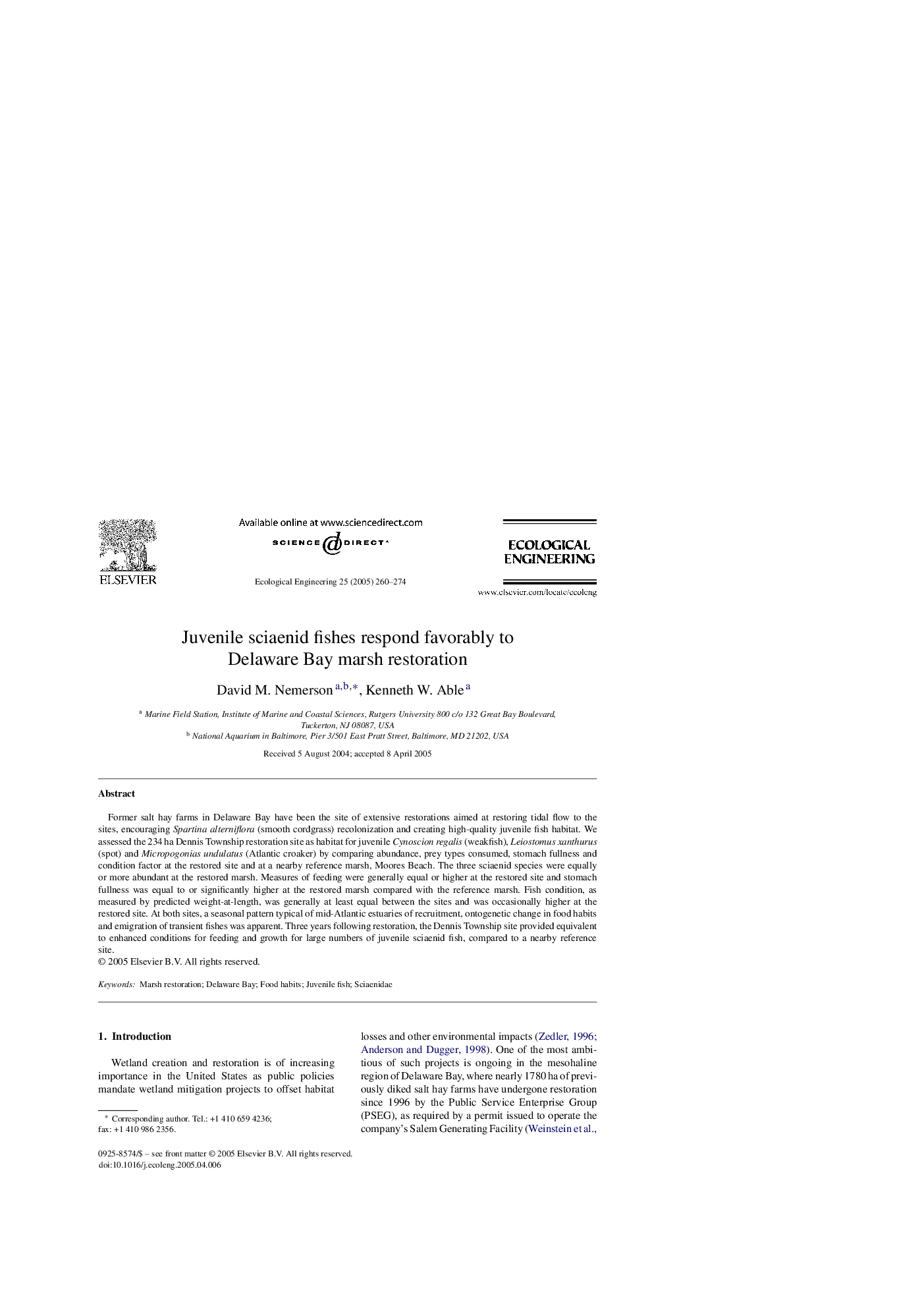| Article ID | Journal | Published Year | Pages | File Type |
|---|---|---|---|---|
| 9447491 | Ecological Engineering | 2005 | 15 Pages |
Abstract
Former salt hay farms in Delaware Bay have been the site of extensive restorations aimed at restoring tidal flow to the sites, encouraging Spartina alterniflora (smooth cordgrass) recolonization and creating high-quality juvenile fish habitat. We assessed the 234Â ha Dennis Township restoration site as habitat for juvenile Cynoscion regalis (weakfish), Leiostomus xanthurus (spot) and Micropogonias undulatus (Atlantic croaker) by comparing abundance, prey types consumed, stomach fullness and condition factor at the restored site and at a nearby reference marsh, Moores Beach. The three sciaenid species were equally or more abundant at the restored marsh. Measures of feeding were generally equal or higher at the restored site and stomach fullness was equal to or significantly higher at the restored marsh compared with the reference marsh. Fish condition, as measured by predicted weight-at-length, was generally at least equal between the sites and was occasionally higher at the restored site. At both sites, a seasonal pattern typical of mid-Atlantic estuaries of recruitment, ontogenetic change in food habits and emigration of transient fishes was apparent. Three years following restoration, the Dennis Township site provided equivalent to enhanced conditions for feeding and growth for large numbers of juvenile sciaenid fish, compared to a nearby reference site.
Related Topics
Life Sciences
Agricultural and Biological Sciences
Ecology, Evolution, Behavior and Systematics
Authors
David M. Nemerson, Kenneth W. Able,
